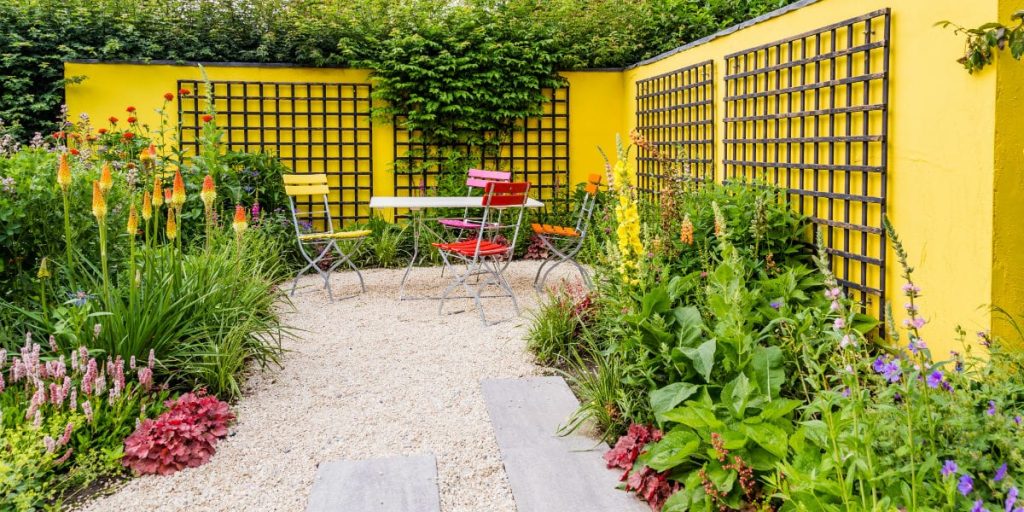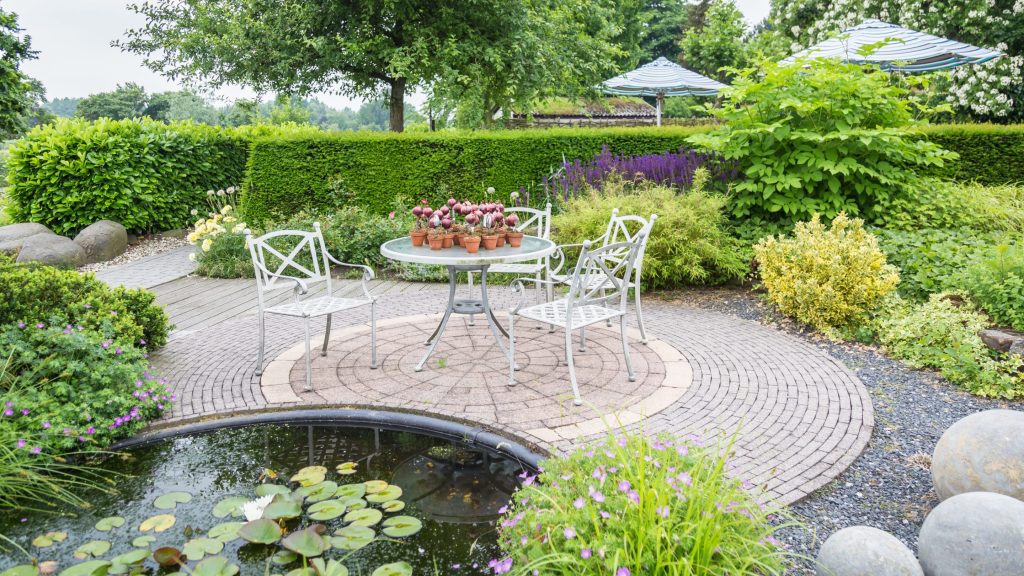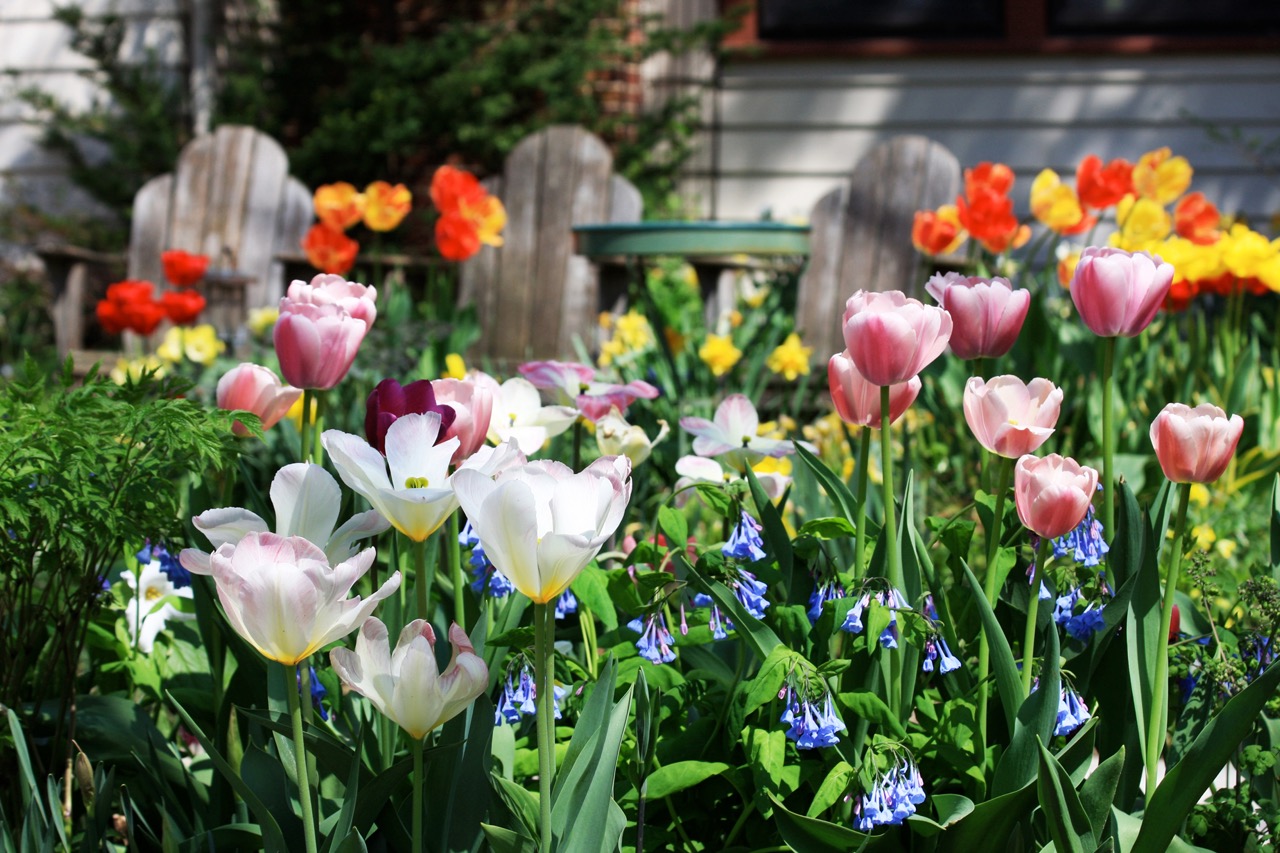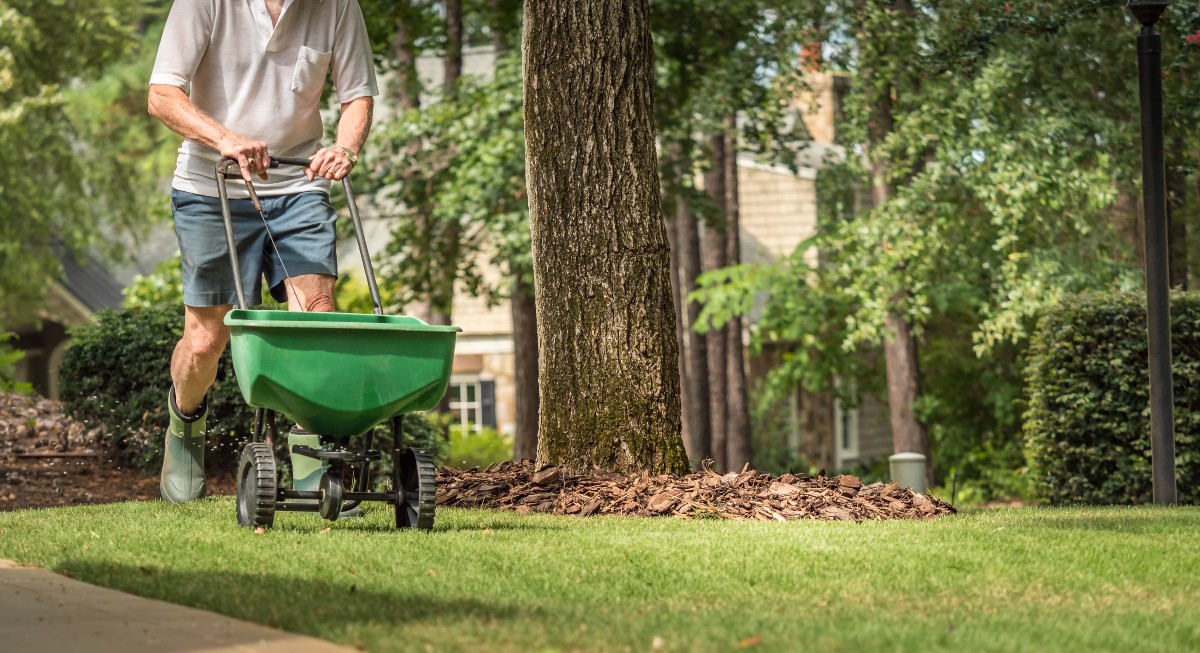Great landscaping isn’t just about putting the right flowers in the right spots, trimming hedges, thatching and aerating lawns, and other “natural” planting and maintenance.
That’s because most yards aren’t entirely “natural.” The best outdoor spaces usually feature a seamless blend of the organic and inorganic—natural elements mixed with man-made features.
The careful selection and placement of hard, inanimate objects within your landscape is known as hardscaping, and it’s an important part of what we do at Bosch’s.
Hardscaping is a broad category. It includes obvious human-made elements and structures (walls, patios, fire pits, etc.) that are built for functional purposes—like enjoying an outdoor meal or sitting around the fire. But hardscaping also includes less “designed” hard elements that might be primarily for decorative purposes, like outcropping stones, gravel, and woodchips.
Balancing all these elements to create a diverse, interesting, functional, and beautiful space is our specialty.
Hardscaping Elements and Projects to Consider
So we’ve given you the general overview of what hardscaping entails, but it might be easier to give you some examples of the many types of hardscaping projects we can help you with.
Making Your Concrete Come Alive
How exciting can concrete really be?
Actually, very!
Your concrete patio doesn’t have to be cold, gray, and boring—we can give it a vibrant, colorful, even patterned look quickly and easily. And it will still have all the benefits of concrete, including low cost, high durability, and easy maintenance.
Bosch’s specializes in stamped, stenciled, and overlaid concrete walks and patios, and the visual results are quite remarkable! You can basically give it any appearance you want—from elegant geometric patterns to simulation brick, sandstone, tile, flagstone, or even crushed glass.
Stamped concrete adds a base color and accent colors to the mix, and a textured pattern to the material. This process is what allows concrete to make an extremely convincing facsimile of other building materials like brick or slate. Concrete overlays, meanwhile, can not only restore and protect the surface of your patio or walkway, but can also add decorative colors and textures, too.
And you don’t have to re-lay your driveway, walkway, or patio to get this look, either. We can enhance existing spaces in the same way.
Add or Expand a Patio
An outdoor patio can add a significant amount of usability, versatility, and even beauty to your backyard. It’s a great place to enjoy the weather, read a book, eat a meal, or just spend time with the family.
But patios come in all shapes and sizes, and the one you have right now (if you have one at all) might not be the one you really want.
Right now, you might only have a small pace for a table and a few chairs, but what about an outdoor fire pit? How about an entire outdoor kitchen or pizza oven? You’re going to need more space!
Bosch’s is happy to help you add a new patio, or repair and enlarge the one you already have—with any kind of overlay or stamping you want, naturally.
Another patio enhancement that’s all the rage right now? Sitting walls. These versatile structures not only add beauty and definition to your patio, but also significantly increase its seating capacity—great for family cookouts or gathering around the fire!

Accent Your Flowerbeds and Gardens and Create Visual Appeal
Of course, there are lots of purely (or at least primarily) decorative purposes to add a touch of hardscaping to your outdoor space. A mix of colors, textures, and both organic and inorganic elements adds visual interest and beauty to almost any environment.
Some common examples of this kind of hardscaping include:
- Creating a rock garden or gravel path
- Adding outcropping stones around flowerbeds to accent them
- Creating pathways, or even stairways, that lead you through and around a larger garden
- Building retaining walls to convert a slope or create unique planting areas
- Adding a small pond, fountain, or other water features
As you can see, these ideas range from the small and simple to grand and elegant—it all depends on your taste, your budget, and what you want out of your yard!
Hardscaping Challenges—And Why You Might Want to Leave Your Project to the Professionals
For those of you hardcore DIYers out there, designing and building your own patio, pathway, or other hardscape features seems like the ultimate summer project. We’re not trying to spoil your fun, but there are some significant reasons you might want to pump the brakes a bit and reconsider.
The main reason is that, unlike flowerbeds or other softscape features, hardscaping is meant to be much more permanent—and therefore the risks are much greater if things don’t work out quite the way you expect them to. You can put in a lot of effort—and a lot of money—into making your dream yard, only to have your design or materials collapse within a few years.
Here are just a few of the challenges and questions that arise any time you’re thinking of adding hardscaping to your outdoor space:
- Have I achieved the right balance?The best landscape designs feature a pleasing mix of hard and soft, manmade and natural. Too much concrete with few plants or grass will look bland and lifeless, or like a commercial property. Too many different colors, textures, or styles can look messy; too few may look boring. If you don’t do your homework and plan carefully, you won’t get the soothing, relaxing feeling you’re going for. It takes a lot of forethought to achieve the right blend.
- What about the rest of the space?Most people improve their yard slowly—one project at a time, element by element, over many years. If you want to put down a patio or decorative a pond today, you don’t want it blocking your way and limiting your options a year or two down the road. You need to consider not just the scope of one project, but the entire space—including long-term goals.
- Will it hold up?Nothing will cause a homeowner’s heart to sink faster than shoddy craftsmanship and deteriorating materials leading to expensive repairs or renovations. These aren’t flowerbeds that can simply be moved or be replanted. You need your hardscaping to last, to ensure the long-term beauty (and safety!) of your property. Retaining walls that aren’t strong enough will buckle and collapse. Sinking patios and structures not supported beneath the frost line will settle and fracture. These are headaches you definitely don’t need.
- What about the drainage?Drainage is an absolutely critical concern in most hardscape projects. Where the water goes after it hits the patio or a wall makes a huge difference. The best designs can actually direct the runoff to specific locations so it can be captured and used on site. Poor drainage, however, creates slick and swampy conditions on lawns, patios, and pathways. In the worst-case scenario, water being held against the side of your house can cause significant structural damage to interior finishes, floors, or even the foundation.

So if you aren’t 100 percent confident about your skills as a hardscaper, you should generally leave this kind of work to the professionals—even for relatively small improvements.
(Even if you are confident, you should still always bring someone experienced in to provide an opinion.)
Fortunately, you have the Bosch’s Landscaping team on your side. We are experts in site analysis and landscape design, and have extensive experience constructing hardscaping projects for residential and commercial clients throughout West Michigan.
We can help take your unique vision, passion, and style and develop them into beautiful, functional, and long-lasting hardscaping projects for your landscape.
You can reach Bosch’s at (616) 399-6861, or you can fill out a contact form online and we’ll get back to you.




